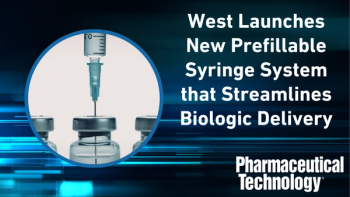
Nanomedicines in EMA Spotlight
After hosting the first international scientific workshop on nanomedicines earlier this month, the European Medicines Agency (EMA) has concluded that further research is needed to provide an adequate scientific basis for evaluating the quality, safety, and efficacy of such medicines.
After hosting the first international scientific workshop on nanomedicines earlier this month, the European Medicines Agency (EMA) has concluded that further research is needed to provide an adequate scientific basis for evaluating the quality, safety, and efficacy of such medicines. EMA and workshop attendees also said, however, that nanomedicines have huge potential in the medical world, and could lead to refined drug delivery, advanced combined diagnostics/therapeutic functions, and matrices and support structures for regenerative medicines.
According to an EMA
“Preparedness is essential for enabling timely introduction of safe and efficacious nanomedicines of a high quality, as nanotechnologies bring not only opportunities to improve current treatments, but also the potential to change the way we approach healthcare and diseases,” Patrick Le Courtois, head of unit human medicines and development at EMA, said in the press statement.
A number of nanomedicines have already been authorized by EMA, including Caelyx (pegylated liposomal doxorubicin hydrochloride, Merck, Whitehouse Station, NJ), Mepact (mifamurtide, Takeda, Osaka, Japan), Abraxane (paclitaxel injection, Abraxis BioScience, Los Angeles) and Rapamune (sirolimus, Pfizer, New York). The products were assessed under the existing regulatory framework. EMA added, however, in its press statement that, “Emerging therapies give rise to questions on the appropriateness of current regulatory frameworks, the relevance and adequacy of existing requirements and guidelines, and on the availability of adequate expertise to regulators.”
In particular, scientific challenges arise from limitations of current testing methods, and the reliability of novel ones, because of the nanosize and the unique behavior of nanosystems in biological structures.
EMA said that it will extend existing platforms for further dialogue on emerging science, needs of patients, and expectations from all stakeholders to keep up to date with scientific progress and to provide a regulatory environment that is “adequate for innovation based on science centred around patients’ needs.”
Newsletter
Get the essential updates shaping the future of pharma manufacturing and compliance—subscribe today to Pharmaceutical Technology and never miss a breakthrough.




